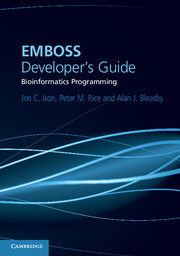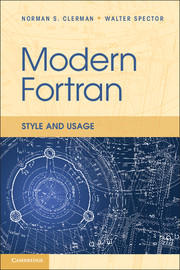Refine search
Actions for selected content:
48290 results in Computer Science
Preface
-
- Book:
- Network Information Theory
- Published online:
- 05 June 2012
- Print publication:
- 08 December 2011, pp xvii-xxii
-
- Chapter
- Export citation
3 - Point-to-Point Information Theory
- from Part I - Preliminaries
-
- Book:
- Network Information Theory
- Published online:
- 05 June 2012
- Print publication:
- 08 December 2011, pp 38-78
-
- Chapter
- Export citation
15 - Graphical Networks
- from Part III - Multihop Networks
-
- Book:
- Network Information Theory
- Published online:
- 05 June 2012
- Print publication:
- 08 December 2011, pp 363-381
-
- Chapter
- Export citation
24 - Networking and InformationTheory
- from Part IV - Extensions
-
- Book:
- Network Information Theory
- Published online:
- 05 June 2012
- Print publication:
- 08 December 2011, pp 600-620
-
- Chapter
- Export citation
Part I - Preliminaries
-
- Book:
- Network Information Theory
- Published online:
- 05 June 2012
- Print publication:
- 08 December 2011, pp 15-16
-
- Chapter
- Export citation
Frontmatter
-
- Book:
- Network Information Theory
- Published online:
- 05 June 2012
- Print publication:
- 08 December 2011, pp i-iv
-
- Chapter
- Export citation
Part of speech tagging for Arabic
-
- Journal:
- Natural Language Engineering / Volume 18 / Issue 4 / October 2012
- Published online by Cambridge University Press:
- 06 December 2011, pp. 521-548
-
- Article
- Export citation

EMBOSS Developer's Guide
- Bioinformatics Programming
-
- Published online:
- 05 December 2011
- Print publication:
- 16 June 2011

Wadge Degrees and Projective Ordinals
- The Cabal Seminar, Volume II
-
- Published online:
- 05 December 2011
- Print publication:
- 01 December 2011

Modern Fortran
- Style and Usage
-
- Published online:
- 05 December 2011
- Print publication:
- 05 December 2011
1 - Introduction
-
- Book:
- Modern Fortran
- Published online:
- 05 December 2011
- Print publication:
- 05 December 2011, pp 1-2
-
- Chapter
- Export citation
B - Rule List
-
- Book:
- Modern Fortran
- Published online:
- 05 December 2011
- Print publication:
- 05 December 2011, pp 308-320
-
- Chapter
- Export citation
4 - Naming Conventions
-
- Book:
- Modern Fortran
- Published online:
- 05 December 2011
- Print publication:
- 05 December 2011, pp 24-37
-
- Chapter
- Export citation
7 - Programming Conventions
-
- Book:
- Modern Fortran
- Published online:
- 05 December 2011
- Print publication:
- 05 December 2011, pp 98-139
-
- Chapter
- Export citation
8 - Input and Output
-
- Book:
- Modern Fortran
- Published online:
- 05 December 2011
- Print publication:
- 05 December 2011, pp 140-164
-
- Chapter
- Export citation
12 - Parallel Processing
-
- Book:
- Modern Fortran
- Published online:
- 05 December 2011
- Print publication:
- 05 December 2011, pp 216-246
-
- Chapter
- Export citation
15 - Updating Old Programs
-
- Book:
- Modern Fortran
- Published online:
- 05 December 2011
- Print publication:
- 05 December 2011, pp 271-288
-
- Chapter
- Export citation
9 - Packaging Conventions
-
- Book:
- Modern Fortran
- Published online:
- 05 December 2011
- Print publication:
- 05 December 2011, pp 165-170
-
- Chapter
- Export citation
Source Code Listings
-
- Book:
- Modern Fortran
- Published online:
- 05 December 2011
- Print publication:
- 05 December 2011, pp xi-xii
-
- Chapter
- Export citation
